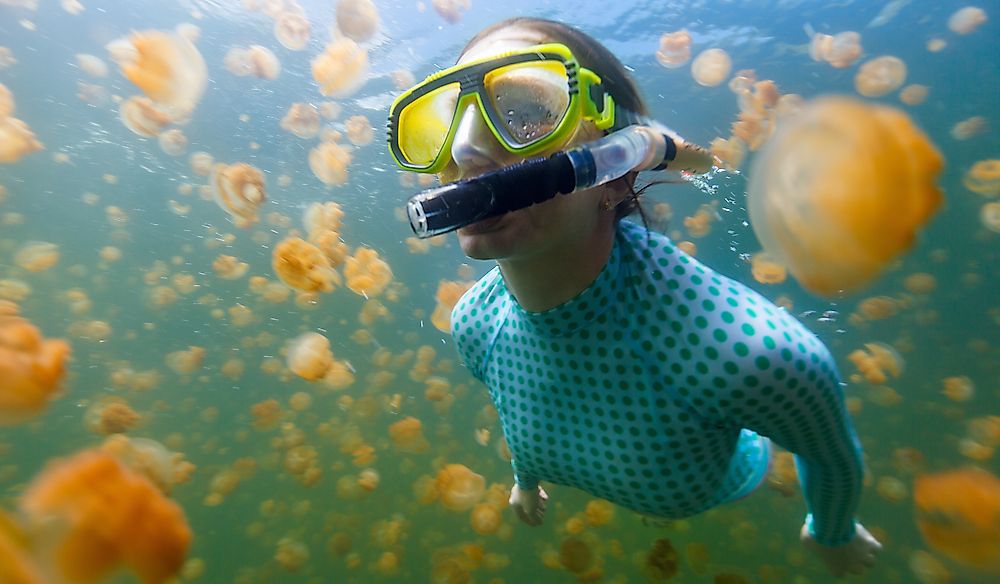What Are The Biggest Industries In Palau?

Palau is an island country in the western Pacific Ocean comprising of 340 islands and covering an area of approximately 180 square miles in Micronesia. The capital city of Palau is Ngerulmud, located on the island of Babeldaod while Koror is the most populous island. Because of its dispersed and small nature, the island state of Palau has very view industries. Because of this, the country relies heavily on foreign assistance, especially from the United States. The economy of Palau is mainly dominated by three industries; tourism, fishing, and agriculture. Tourism is the largest sector and a major source of government revenue. Agriculture is primarily subsistence while fishing is a potential for additional revenue but the tuna catch continues to drop. The willingness of foreign nations to finance infrastructure development is seen as a move towards creating more industries in the country. Below is the detailed analysis of the major industries in Palau and their contribution to the economy.
Tourism
The economy of Palau is mainly dominated by the service sector which contributes about 80% of the total GDP and employs over 75% of the workforce. Tourism is the most important service industry in Palau and the country’s economic backbone. Every year, Palau receives more visitors than its population. In 2016, a total of 140,000 tourists visited the country, effectively making tourism the leading economic driver. Tourist visits Palau for several reasons. First, the island nation enjoys a tropical climate throughout the year with an average annual temperature of 28 degrees Celsius. The warm climate ensures that the island receives visitors throughout the year. Secondly, Palau has a wide range of attraction, from pristine beaches to the marine ecosystem. In 2015, the country created a marine sanctuary that covers nearly 80% of its territorial waters. The marine sanctuary offers control fishing activities to visitors. However, tourism activities focus on snorkeling and scuba diving among the country’s rich marine environment. The most popular dive site is the Blue Corner with constant high currents and sharks. Other diving sites include Ulong Channel, German Channel, and Blue Hole. Apart from water activities, visitors can also tour the World War II battlefield in Palau.
Agriculture
Agriculture is one of the major economic activities in Palau, along with tourism and fishing. However, because of its geographical nature and lack of adequate farming skills, the country does not produce enough food to sustain itself. Agriculture contributes less than 2% of the GDP, dropping from around 5% in 2009. About 3% of the household income is derived from agriculture and about 8% of the labor force is involved in agriculture-related activities. About 11% of the country’s total land area is considered arable land but only 12% of this agriculturally potential land is under agriculture. Palau relies on import to meet its food demand with food imports accounting for about 9% of the total import. Agriculture is mainly subsistence with the main crops grown in the country being bananas, coconut, taro, tropical fruits, and vegetables. Livestock activities mainly involve poultry, dairy, and pig rearing. Since Palau is unable to incorporate any economies of scale in agricultural production, the sector is unlikely to experience any significant growth in the coming years.
Fishing
The fishing industry is not only a source of livelihood for the majority of Palauan, but it is also a major contributor to the national economy. The island country contains one of the highest marine biodiversity in the world. Palau is part of the Coral Triangle which covers only about 2% of the total global ocean but contains up to 76% of all known coral species. Despite a large number of fish resources, most fishing is often conducted on subsistence and semi-subsistence levels, with only a few of the catches finding their way to the market. The commercial fisheries production amounted to 865 metric tons in 2014. Techniques used in subsistence and commercial fishing range from spear fishing to hook line fishing, net fishing, and trolling. About 25% of the households in Palau own fishing boats while some have access to motor boats. Although subsistence fishing remains a major activity, Palau’s economic growth and large foreign labor force have resulted in the growth of the cash market for fresh fish and other kinds of seafood. About 193,000 square miles or 80% of Palau’s EEZ is a protected sanctuary where fishing activities are highly controlled while the other 20% is open for fishing.
The State of Other Industries in Palau
Although the economy of Palau mainly consists of tourism, agriculture, and fishing, other sectors of the economy also play a role in the country’s growth and development. Palau has very few natural resources, some of which have negligible value. There are little mining and quarrying activities in the country. Quarrying is mainly restricted to coral for construction. The manufacturing industry contributes about 1% of the GDP and is mainly dominated by a garment factory which employs about 300 people. The construction industry is significantly large, accounting for about 8% of the GDP and employs about 14% of the workforce. Most of the construction companies are foreign-based and are mainly involved in infrastructure development.











